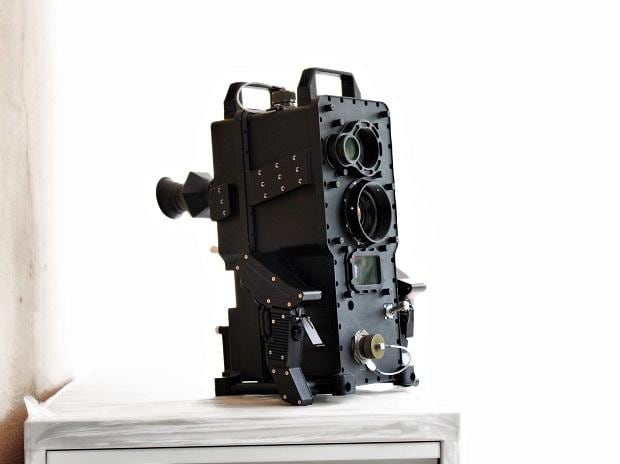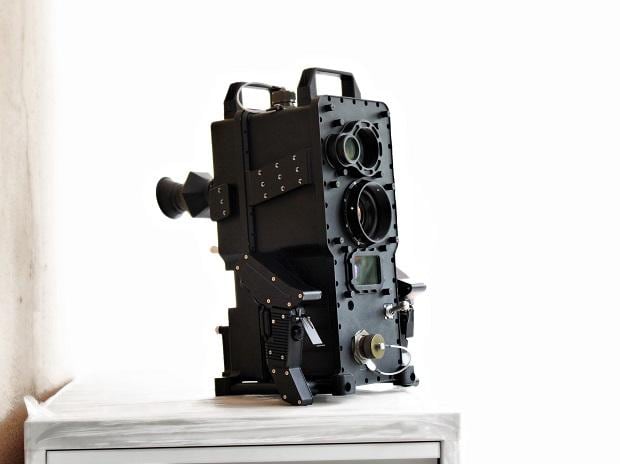A
adenl
Guest
Looks indeed much better and will perform better than the bulky SA-6 lookalike.
Last edited by a moderator:
Latest Thread
Akash-NG as of now probably uses either the Ka or Ku-band Pulsed Doppler Radar (PDR) seeker. Ku-band seeker most likely. AESA seekers looks unlikely for Akash-NG.Integrated AESA seeker firmly puts this into a new-generation of AAMs.
The older Akash can be exported to friendly countries to keep the production line going, while the NG version takes its place domestically.
Interesting developments. Ka-band has better resolution and is highly suited for hit-to-kill missiles. With AESA seekers in Ka-band, one has an almost un-jammable and highly accurate missile.Akash-NG as of now probably uses either the Ka or Ku-band Pulsed Doppler Radar (PDR) seeker. Ku-band seeker most likely. AESA seekers looks unlikely for Akash-NG.
View attachment 13046
View attachment 13045
Speaking of AESA seekers :
Issue 90 defenceturkey magazine:
View attachment 9046
Siper will have a Ka-band seeker that will be same with Aster-30 Block1NT seeker. MBDA has upgraded the Aster-block-30 missle (Ku band) with new Ka band seeker head. Ka band has many strategic advantages compared to Ku band seekers in terms of detection range and sight angle. @Nutuk
I think it works best for the missles it suits.Interesting developments. Ka-band has better resolution and is highly suited for hit-to-kill missiles. With AESA seekers in Ka-band, one has an almost un-jammable and highly accurate missile
Air Defense: India Stumbles To Success
In late 2020 India conducted successful acceptance tests of MRSAM (Medium Range Surface-To-Air Missile) land-based air defense system This weapon is based on the Israeli Barak 8 SAM (surface-to-air missile) system MRSAM uses a mobile multimode radar siwww.strategypage.com
I often misread LRSAM for LRASM.
Brahmos range extended to 400 on the existing missiles and 800 on the new ones. Agni 1 out of commission, Agni 3 majority of the current inventory, Agni 5 put into commission recently a year ago maybe still filling numbers. K15 currently equipped and in service, K4 maybe ( no one knows really, Secret tests have taken place but never reported). K5 or K6 ( maybe both are the same no clue) is being worked upon for the new extended SSBNs S5 onwards, the range could be 8K according to rumors.Well! no Indian fella posted this in here, So here we go. Any update on K4 & K15 missile would be nice.
View attachment 14202 View attachment 14203

$500 mn, the opportunity for Tonbo to indigenize new missile seekers for India’s missile programme.
60%, the total Indian content that Tonbo has to include and prove the design is indigenous.
$2.5 bn, the firm’s sales pipeline with a near term execution visibility of $300 mn.
$50 bn, the autonomous surveillance, reconnaissance and targeting market, that Tonbo is eyeing.
$71.1 bn, India’s military expenditure in 2019, which grew by 6.8%.
$261 bn, China’s military expenditure in 2019, which grew by 5.1%.

Tonbo bags multi-million-dollar deal for indigenising Indian missiles
Night-vision startup, which is backed by investors such as Artiman and Qualcomm, has an overall sales pipeline of over $2.5 bn with a near-term execution visibility of $300 mnwww.business-standard.com
K15 and K4 have both been inducted into INS Arihant but no official confirmation of the K4 came out. K5 is being tested using underwater platforms while no info on the K6 yet. Utmost secrecy is being maintained for the K-series missiles since they complete our nuclear triadBrahmos range extended to 400 on the existing missiles and 800 on the new ones. Agni 1 out of commission, Agni 3 majority of the current inventory, Agni 5 put into commission recently a year ago maybe still filling numbers. K15 currently equipped and in service, K4 maybe ( no one knows really, Secret tests have taken place but never reported). K5 or K6 ( maybe both are the same no clue) is being worked upon for the new extended SSBNs S5 onwards, the range could be 8K according to rumors.

 theprint.in
theprint.in
